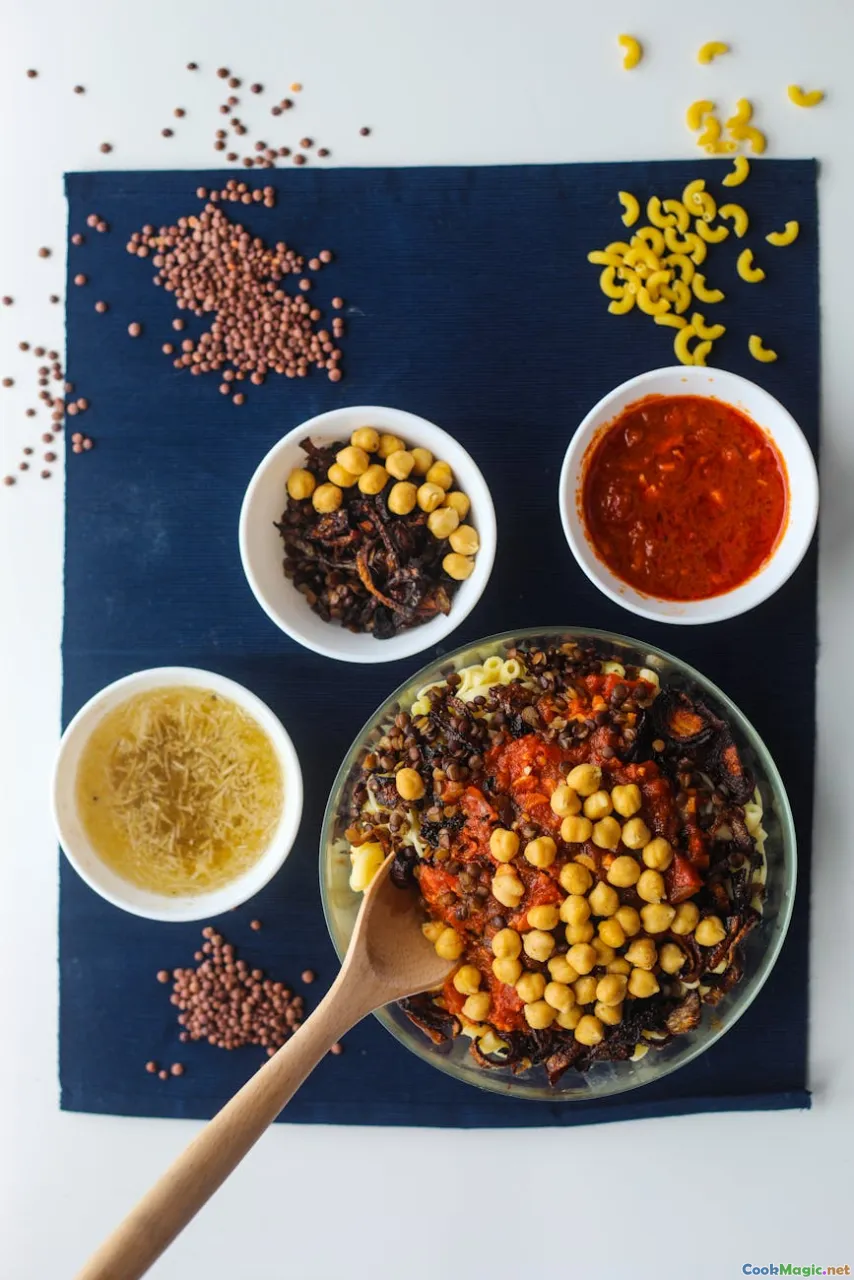Traditional Egyptian Dishes to Try Today
8 min read Discover the rich tapestry of Egyptian culinary heritage with iconic dishes that tell stories of history, culture, and flavor in every bite. April 28, 2025 20:00
Traditional Egyptian Dishes to Try Today
Imagine walking through bustling markets where the aroma of spices, freshly baked bread, and slow-cooked stews fills the air. Egypt, a land of ancient history and vibrant culture, boasts a culinary landscape as rich and diverse as its pyramids and pharaohs. Egyptian cuisine is a soulful blend of flavors, textures, and aromas that reflect centuries of tradition, regional influences, and a deep connection to community and celebration.
Whether you're a seasoned food lover or a curious newcomer, exploring Egyptian dishes offers a journey not just of taste but of cultural immersion. From humble street snacks to regal royal dishes, each bite is an invitation to experience Egypt’s soul.
The Heart of Egyptian Culinary Heritage
Egyptian cuisine is rooted in the Nile River's fertile banks, where agriculture has thrived for millennia. Staples like wheat, rice, beans, vegetables, and herbs form the backbone of many recipes. The use of aromatic spices such as cumin, coriander, cinnamon, and allspice adds depth and warmth.
Food in Egypt is more than sustenance; it’s a symbol of hospitality, tradition, and identity. Shared meals are gatherings that strengthen bonds, and recipes are often passed down through generations, each adding their unique touch.
Must-Try Egyptian Dishes
1. Koshari: Egypt’s National Comfort Food
**Description:**Koshari is a hearty, satisfying dish that combines lentils, rice, pasta, and chickpeas, topped with a spicy tomato sauce and crispy fried onions. It’s a street food staple, beloved for its flavors and affordability.**Sensory Experience:**The first spoonful bursts with the earthiness of lentils and the sweetness of caramelized onions. The textures are delightful—soft rice, al dente pasta, crunchy onions, and tender chickpeas—creating a symphony of contrasts.Cultural Note: Originating from the bustling streets of Cairo, Koshari reflects Egypt’s diverse culinary influences, from Indian to Mediterranean. It’s often enjoyed as a quick lunch or late-night snack.
2. Ful Medames: The Ancient Bean Dish
**Description:**Ful Medames features fava beans slow-cooked with garlic, lemon juice, and olive oil, garnished with chopped parsley, tomatoes, and sometimes a boiled egg or tahini.**Sensory Experience:**The creamy, slightly nutty beans are velvety and satisfying. The tang of lemon and the perfume of fresh herbs elevate this humble dish into a breakfast legend.Cultural Note: Dating back to Pharaonic times, Ful Medames is a breakfast staple, symbolizing simplicity and nourishment. It’s often served with warm, flatbread and pickles.
3. Molokhia: The Mucilaginous Green Soup
**Description:**Made from finely chopped jute leaves simmered in a flavorful broth with garlic and coriander, Molokhia boasts a unique, slightly slimy texture.**Sensory Experience:**The soup is thick and velvety, with an earthy green hue. Its taste is savory with hints of garlic and herbs, often accompanied by rice or bread and tender meats.Cultural Note: Considered a delicacy, Molokhia is traditionally served on Fridays or special occasions, embodying comfort and tradition.
4. Mahshi: Stuffed Vegetables
**Description:**Vegetables like zucchini, eggplant, peppers, and grape leaves are stuffed with a fragrant mixture of rice, herbs, and sometimes minced meat, then cooked in a tomato-based sauce.**Sensory Experience:**The tender, flavorful filling contrasts with the slightly firm vegetables, and the aroma of herbs and spices makes each bite memorable.Cultural Note: A festive dish often prepared for family gatherings and celebrations, showcasing Egyptian ingenuity in transforming humble ingredients into culinary art.
5. Fatta: Celebration in a Dish
**Description:**Fatta is a layered dish with rice, crispy bread, and tender meat, topped with a tangy vinegar and tomato sauce. It’s traditionally served during feasts and religious festivals.**Sensory Experience:**The dish combines textures—the crunch of bread, the softness of rice, and the richness of meat—balanced with the zing of the sauce.Cultural Note: Fatta symbolizes hospitality and celebration, often associated with religious and family gatherings.
Exploring Regional Flavors and Variations
Egyptian cuisine varies across regions, each offering unique twists on these classic dishes. Coastal areas might feature more seafood, such as grilled fish or shrimp dishes, seasoned with local herbs. In Upper Egypt, you might encounter more hearty, rustic stews and bread-based meals.
For example, in Nubian communities, dishes like Asida (a porridge-like staple made from sorghum or wheat flour) are common, emphasizing simplicity and communal eating.
Personal Reflections and Culinary Adventures
Having traveled through Egypt and indulged in its culinary delights, I can attest to the profound connection between food and culture here. One unforgettable experience was sharing a steaming bowl of Ful Medames with local vendors in a Cairo alleyway, where the aroma alone was enough to draw a crowd.
Cooking these dishes at home offers a chance to connect with Egypt’s rich history. The process of slow-cooking, layering flavors, and sharing meals is a form of storytelling—each dish a chapter of Egypt’s ongoing narrative.
Tips for Trying Egyptian Dishes at Home
- Source authentic ingredients: Look for Egyptian or Middle Eastern spices, olive oil, and fresh herbs.
- Embrace simplicity: Many recipes are humble yet deeply flavorful.
- Experiment with textures: Combining soft, crunchy, and chewy elements enhances the dining experience.
- Cook with love: As with all traditional cuisines, the heart in the preparation makes all the difference.
Final Thoughts
Egyptian cuisine is an edible tapestry woven with history, culture, and community. From the comforting layers of Fatta to the vibrant flavors of Koshari, each dish invites you to taste centuries of tradition. Whether you’re exploring street foods or preparing a festive feast, these dishes offer a delicious window into Egypt’s soul.
So, why not embark on this culinary journey today? Gather your ingredients, invite friends or family, and celebrate the timeless flavors of Egypt—an invitation to savor history, warmth, and the rich tapestry of life itself.
**Bon appétit, or as Egyptians say,









